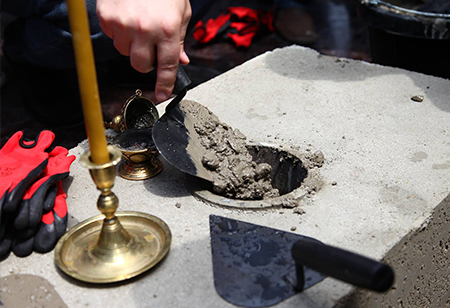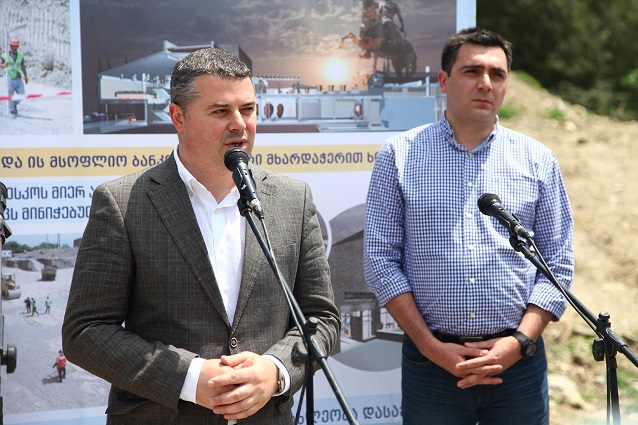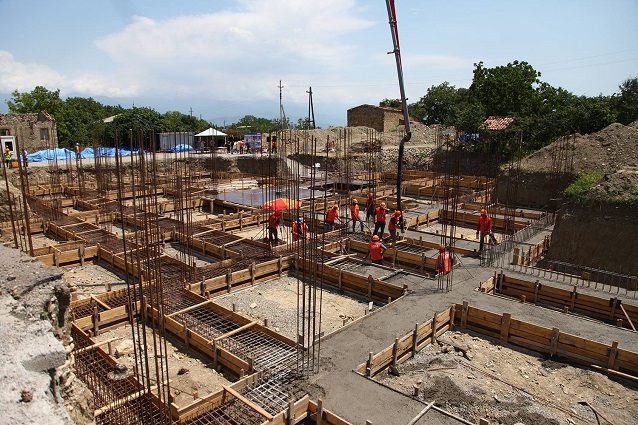Qvevri House will revitalise Kakheti and save ancient winemaking methods

A new multi-million GEL facility is being built in Georgia’s Kakheti region to restore the country’s ancient winemaking tradition and develop the region’s historic, cultural, educational, recreational and touristic potential.
The multi-functional facility, called Qvevri House, will include a cultural/tourist centre, workshop and museum where visitors can learn the ancient qvevri (clay jar) winemaking methods. The facility will also aid the local economy and offer employment opportunities to local residents.
Construction of the new Qvevri House started yesterday in Ikalto village, Kakheti.
An area of land measuring 5,407.55 m2, earlier allocated to the Qvevri House project, had all the preconditions to create a learning-manufacturing (workshop) and cultural centre that will be equipped with high-class modern technologies, read the project brief.
The project, valued at almost 2.3 million GEL, was initiated by the Municipal Development Fund of Georgia’s Regional Development and Infrastructure Ministry and was being financed by the World Bank Group.

Georgia's Agriculture Minister Otar Danelia speaks at the sod-turning ceremony. Photo from Georgia's Ministry of Agriculture/Facebook.
Those who will benefit the most from Qvevri House are the Kakheti population and tourists who visit the region, however Georgia’s younger generation will also be able to learn the ancient qvevri winemaking methods and preserve the historical tradition.
Georgia’s unique qvevri winemaking method has been approved by UNESCO to be included in its list of Intangible Cultural Heritage.
Qvevri is a large clay amphora-like vessel that is traditionally buried in the ground up to its neck, in which wine is fermented and stored. After the fermentation process, which occurs naturally without the addition of any nutrients, the qvevri is sealed with a wooden lid then buried. The wine is left to mature for up to six months before it is opened and ready to be sampled.
This technique is used all over Georgia but mainly in the Kakheti region, in east Georgia.
Construction of Qvevri House is expected to be completed by September 2016.
The project brief noted the Qvevri House would encompass several components; cultural-educational, manufacturing and tourist-recreational.
School students from across Georgia will utilise the new facility and, guided by experts, will be taught the traditional qvevri way of winemaking as well as various methods of how to make old Georgian drinking pottery and wine vessels.

An area of land measuring 5,407.55 m2 is allocated to the Qvevri House project. Photo from Georgia's Ministry of Agriculture/Facebook.
Courses and practical classes will also be open to locals, tourists and all interested parties.
Qvevri House will also have a space where people can make qvevri jars. In addition, the workshop will include a museum where ceramic items are showcased. At the same time visitors will have the opportunity to make their own ceramic items.
When complete the Qvevri House facility will also boast a library and Internet cafe.
 Tweet
Tweet  Share
Share